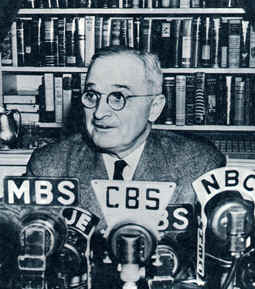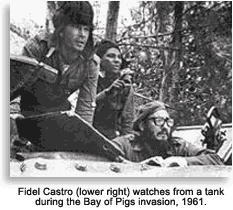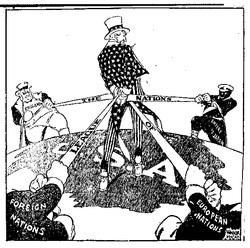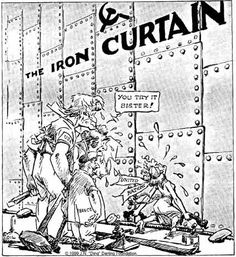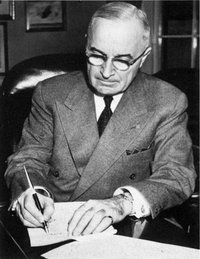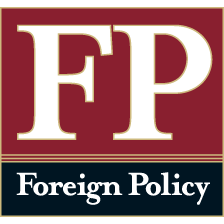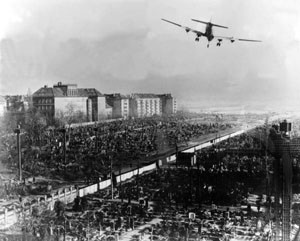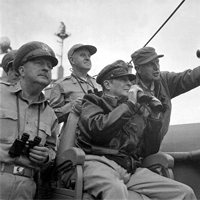AP US History: Truman Doctrine Quiz!

First expressed in 1947 by US President Truman in a speech to Congress seeking aid for Greece and Turkey, the doctrine was seen by the communists as an open declaration of the Cold War. If you need to study this doctrine, take this quiz to see how much you really know.
- 1.
The Truman Doctrine and the Marshall Plan represented attempts by the United States to deal with the
- A.
National debt
- B.
Spread of communism
- C.
President’s political opposition
- D.
Arms race
Correct Answer
B. Spread of communismExplanation
The Truman Doctrine and the Marshall Plan were both strategies implemented by the United States to address the spread of communism. The Truman Doctrine aimed to provide economic and military aid to countries threatened by communist influence, while the Marshall Plan provided financial assistance to help rebuild war-torn Europe and prevent the spread of communism in the region. These initiatives were part of the broader containment policy, which sought to prevent the expansion of communism and protect American interests during the Cold War.Rate this question:
-
- 2.
Both the Bay of Pigs invasion of Cuba (1961) and the invasion of Panama (1989) are examples of United States attempts to
- A.
Eliminate unfriendly governments geographically close to the United States
- B.
Cultivate good relations with Latin American nations
- C.
Stop the drug trade
- D.
End the Cold War
Correct Answer
A. Eliminate unfriendly governments geographically close to the United StatesExplanation
Both the Bay of Pigs invasion of Cuba (1961) and the invasion of Panama (1989) were military interventions carried out by the United States in an effort to eliminate unfriendly governments that were geographically close to the United States. In both cases, the United States sought to remove leaders who were seen as a threat to American interests or security. These interventions were part of a broader strategy to exert influence and control in the region, ensuring that governments aligned with US interests were in power.Rate this question:
-
- 3.
“An attack on one shall be considered an attack on all.” This statement summarizes the foreign policy known a
- A.
Colonialism
- B.
Nonalignment
- C.
Appeasement
- D.
Collective security
Correct Answer
D. Collective securityExplanation
The statement "An attack on one shall be considered an attack on all" reflects the principle of collective security. This foreign policy approach involves countries forming alliances and agreeing to defend each other in the event of an attack. By collectively responding to aggression, the goal is to deter potential attackers and maintain peace and stability. This concept was famously embodied in organizations like NATO, where member states pledge mutual defense.Rate this question:
-
- 4.
Shortly after World War II, the cold war developed mainly as a result of the
- A.
United States refusal to send economic aid to European nations
- B.
Soviet domination of Eastern Europe
- C.
Competition between the superpowers to explore outer space
- D.
Continuation of the pre-World War II balance of power
Correct Answer
B. Soviet domination of Eastern EuropeExplanation
The correct answer is Soviet domination of Eastern Europe. After World War II, the Soviet Union established control over several countries in Eastern Europe, forming the Eastern Bloc. This led to tensions between the Soviet Union and the United States, as the US saw this as a threat to the spread of communism and the expansion of Soviet influence. The cold war was characterized by political, economic, and military competition between the two superpowers, with the Soviet domination of Eastern Europe being a major factor in its development.Rate this question:
-
- 5.
A common purpose of the Truman Doctrine, the Marshall Plan, and the Eisenhower Doctrine was to
- A.
Carry out the United States policy of preventing the spread of communism
- B.
Insure the survival of the newly independent nations of Africa and Asia
- C.
Limit the proliferation of nuclear weapons
- D.
Provide medical aid to Latin American nations
Correct Answer
A. Carry out the United States policy of preventing the spread of communismExplanation
The Truman Doctrine, the Marshall Plan, and the Eisenhower Doctrine were all policies implemented by the United States with the aim of preventing the spread of communism. The Truman Doctrine, announced in 1947, provided economic and military assistance to countries threatened by communism. The Marshall Plan, initiated in 1948, aimed to rebuild war-torn Europe by providing economic aid, with the goal of stabilizing the region and preventing the spread of communism. The Eisenhower Doctrine, announced in 1957, pledged military assistance to Middle Eastern countries threatened by communism. Therefore, the common purpose of these doctrines was to carry out the United States policy of preventing the spread of communism.Rate this question:
-
- 6.
After World War II, the United States departed most sharply from its traditional foreign policy when it
- A.
Stopped foreign-aid programs
- B.
Sponsored disarmament treaties
- C.
Organized global systems of alliances
- D.
Recognized revolutionary governments
Correct Answer
C. Organized global systems of alliancesExplanation
After World War II, the United States departed most sharply from its traditional foreign policy by organizing global systems of alliances. This departure marked a significant shift in the country's approach to international relations. Instead of relying solely on unilateral action, the United States sought to build alliances and partnerships with other nations to promote collective security and address common challenges. This change in foreign policy was exemplified by the creation of NATO (North Atlantic Treaty Organization) in 1949, which established a system of mutual defense among its member countries. By organizing global systems of alliances, the United States aimed to maintain stability and exert influence on the world stage.Rate this question:
-
- 7.
What was the main purpose of the Truman Doctrine, the Marshall Plan, and the Berlin air-lift?
- A.
Controlling Nazism in Europe
- B.
Establishing friendly relations between the United States and the Soviet Union
- C.
Spreading democracy to developing nations
- D.
Limiting Soviet expansion
Correct Answer
D. Limiting Soviet expansionExplanation
The main purpose of the Truman Doctrine, the Marshall Plan, and the Berlin air-lift was to limit Soviet expansion. The Truman Doctrine was a policy aimed at containing the spread of communism, particularly in Europe. The Marshall Plan provided economic aid to war-torn European countries, with the goal of preventing the spread of communism through economic stability. The Berlin air-lift was a response to the Soviet blockade of West Berlin, and it aimed to ensure the continued presence and influence of the United States in the region, countering Soviet expansionist efforts.Rate this question:
-
- 8.
During the Korean War, what was the main reason that President Harry Truman dismissed General Douglas MacArthur as commander of the United States troops?
- A.
The United States had suffered many severe military losses.
- B.
Congress refused to appropriate any more money to support the war.
- C.
President Truman believed that General MacArthur’s conduct threatened the concept of civilian control over the military
- D.
General MacArthur disobeyed President Truman by deciding to stop fighting the war.
Correct Answer
C. President Truman believed that General MacArthur’s conduct threatened the concept of civilian control over the militaryExplanation
President Truman believed that General MacArthur’s conduct threatened the concept of civilian control over the military. This suggests that Truman dismissed MacArthur because he felt that MacArthur was undermining the principle that the military should be subordinate to civilian authority. This decision may have been influenced by MacArthur's public statements and actions, such as advocating for a more aggressive approach in the Korean War and publicly criticizing Truman's decisions. Truman's dismissal of MacArthur was a demonstration of his commitment to maintaining civilian control and authority over the military.Rate this question:
-
Quiz Review Timeline +
Our quizzes are rigorously reviewed, monitored and continuously updated by our expert board to maintain accuracy, relevance, and timeliness.
-
Current Version
-
Mar 22, 2023Quiz Edited by
ProProfs Editorial Team -
Mar 28, 2016Quiz Created by
Soffe1399
 Back to top
Back to top



